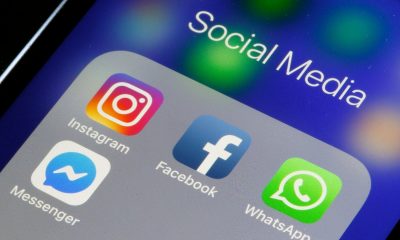Guide
Biden Program: Low-wage Earners to Get High-speed Internet for $30
With the evident need for internet connection nationwide, the Biden administration has established another program to lower the costs of high-speed internet in the country. Last May 9, 2022, President Joe Biden delivered his speech stating that twenty internet service providers, including major companies, such as Verizon, AT&T, and Comcast, have agreed to offer internet discounts for low-income families, extending high speed internet to at least 48 million households in the United States.
The Biden program aims to help eligible households to have a dependable internet connection without spending more than $30 per month with the help of the participating internet providers. The federal government will cover the total cost of the internet plan if the qualified individuals subscribe to a participating internet provider. At least 48% of the country, or around 48 million households, will benefit from this program.
According to the White House, over 11,500,000 households have now registered to receive government subsidies. The White House stated that the 100Mbps internet connection is sufficient for a family to work from home, participate in education, browse the web, and stream HD movies and television shows. In fact, it’s more than enough to sustain a household’s everyday internet activities.
President Biden stated that “High-speed internet is not a luxury any longer; it’s a necessity.” during his speech at the White House. True enough, with almost every industry becoming highly dependent on the internet, it can be difficult and even nearly impossible to do many things without a fast internet connection. Fortunately, President Biden has been making efforts to help fight the digital divide in the country during his term.
Many low-income households can qualify for the internet subsidies if they are a member of any anti-poverty programs, such as the federal housing assistance, Pell Grant tuition assistance, Medicaid, Supplemental Nutrition Assistance Programs (SNAP,) and more. They can also be eligible if their current income is at or below 200% of the federal poverty guideline.
The Fight for the Digital Divide
During Biden’s 2020 campaign, the president has always prioritized internet connection for rural and low-income households. According to the 2021 study conducted by the Pew Researcher Center, access to broadband has significantly improved among the rural population over the past ten years. Still, rural and other remote areas are still massively behind when it comes to service.
The study has discovered that around seven out of ten people in rural areas have home broadband connectivity, and the same percentage owned a laptop or desktop. On the other hand, eight out of then people owned a smartphone. The ratios for urban and suburban residents were 5 to 10 percentage points higher.
According to experts, the cost of an internet plan has long been a greater challenge in urban and suburban areas than network availability. This has stopped families from accessing healthcare services, engaging in educational activities, and enjoying leisure online. True enough, even if the coverage isn’t the problem, it’s always due to the high costs that many households cannot afford.
With the incapacity to subscribe to a home broadband plan, some individuals have taken tremendous measures to have internet access. Many students go to coffee shops and fast food restaurants with free Wi-Fi just so they can accomplish their homework and other tasks. During the COVID-19 pandemic, public libraries even established stations for senior citizens to have access to remote healthcare. This allows elders to connect with physicians to assess their condition, but they cannot have the privacy that most patients have.
The infrastructure package proposed by Biden allocated $65 billion to expand the nation’s broadband network. However, a $14 billion budget has been designated for internet subsidies. Meanwhile, the target households for the said program don’t have access to the internet, making them harder to reach. The White House stated that it would collaborate with other federal departments, state and local governments, and humanitarian organizations to disseminate information.
Final Thoughts
The program will certainly raise many questions from experts on how the internet providers have structured their pricing. Even though the discounts apply to low-income households, internet service providers usually sell their products at a much higher price, raising more questions about price transparency from the ISPs. Regardless, it’s still a first step towards eliminating the digital divide in the country.

















